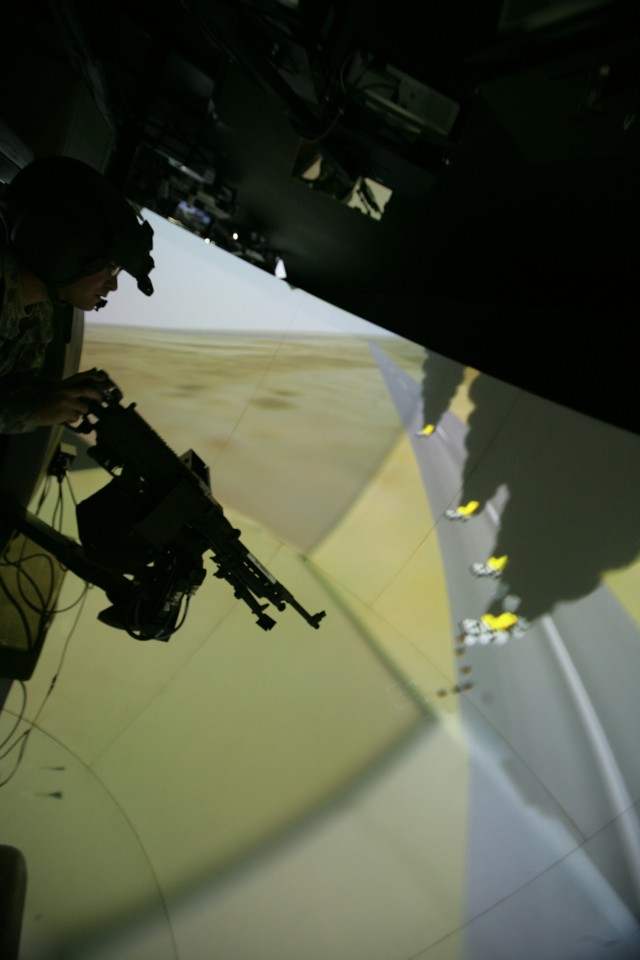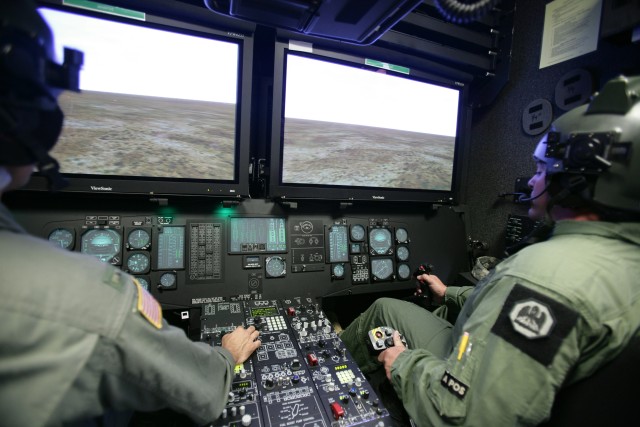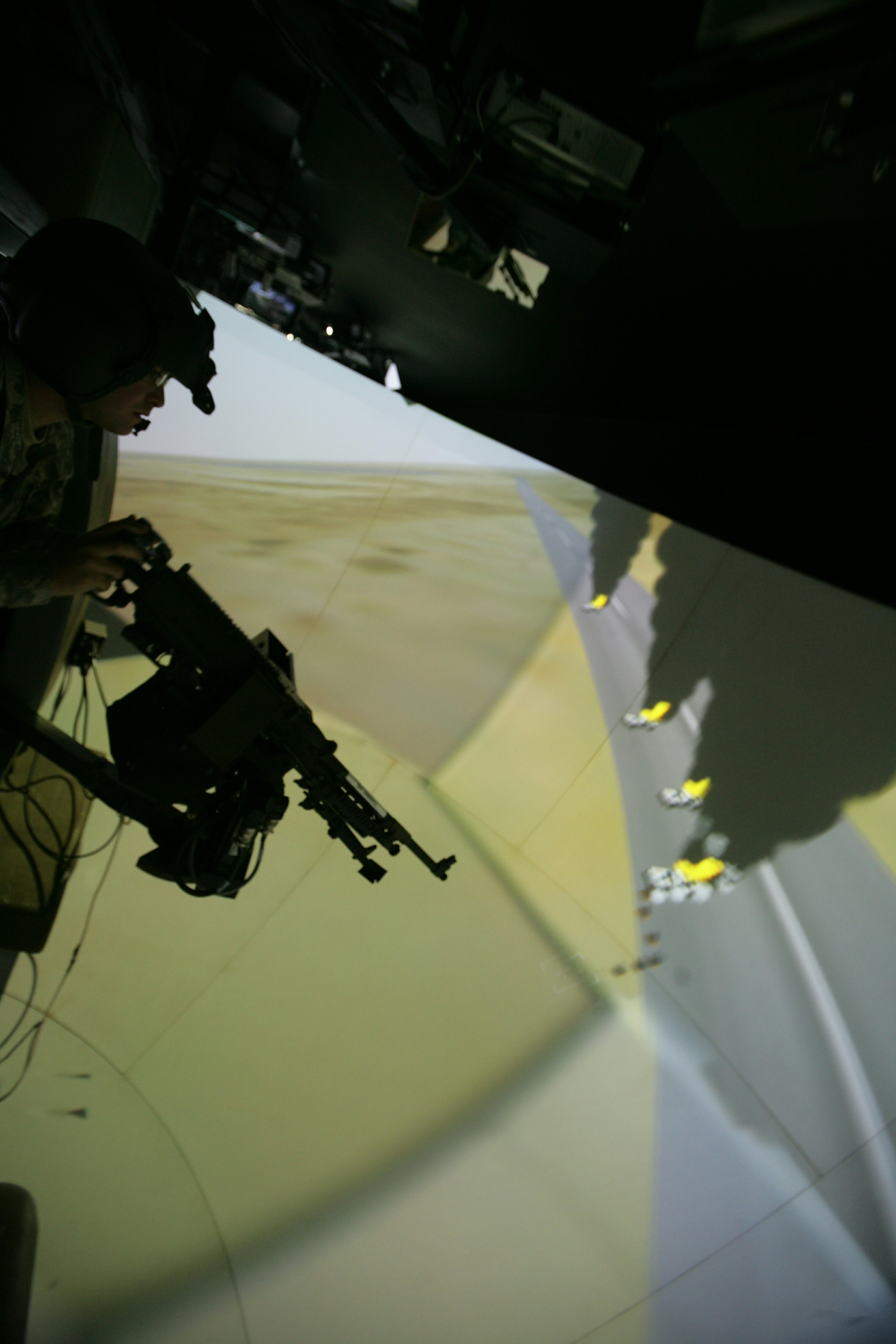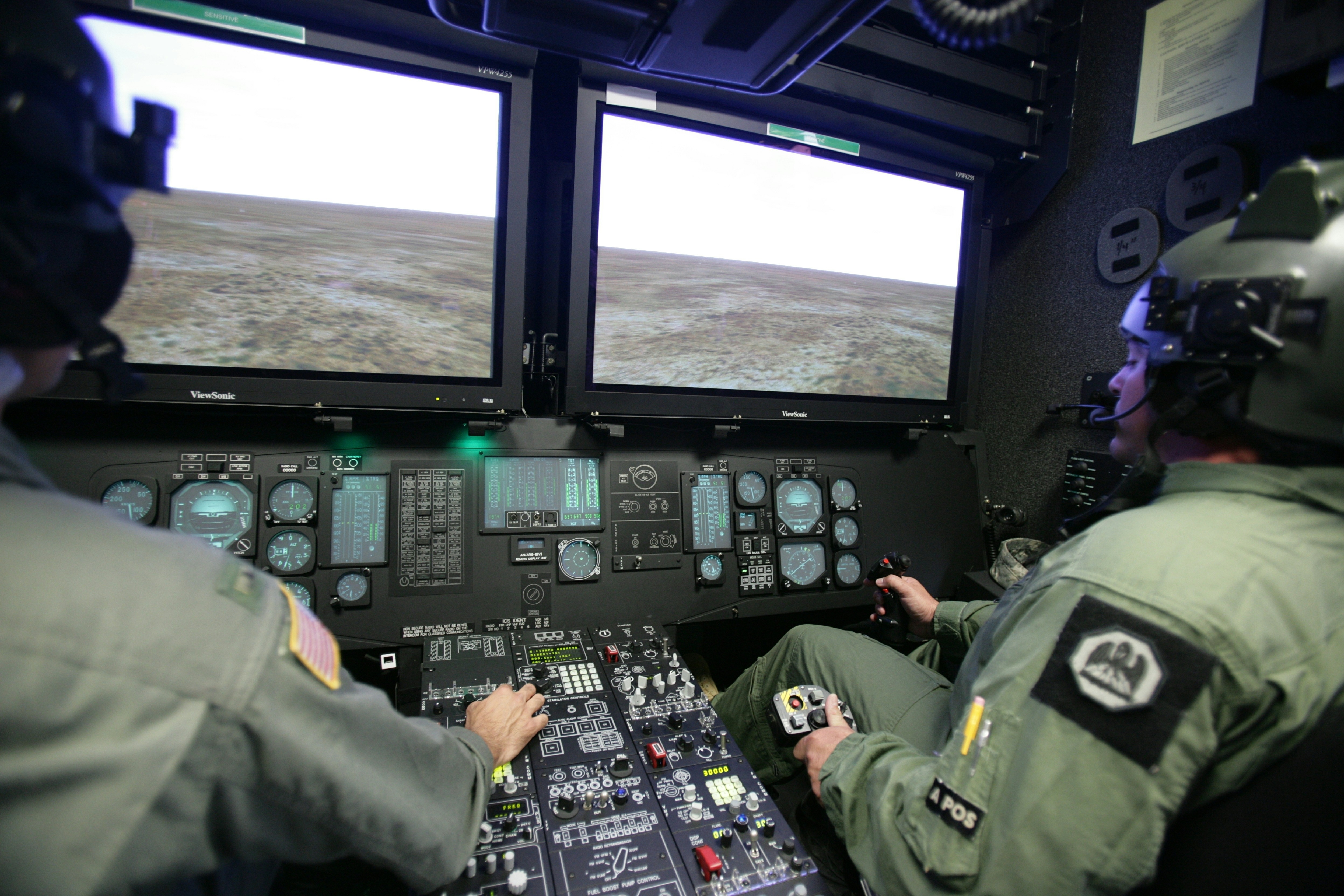With the Army going digital with many aspects of its culture, from forms to uniforms, and even games like America's Army, training for its Soldiers has entered the virtual realm.
The Aviation Combined Arms Tactical Trainer allows an air crew the ability to, not only hone their skills individually, but to also work as a team.
"In aviation we use simulators quite often to conduct training exercises," 1st Lt. Edwin N. Reliford Jr., a pilot with an aviation unit from the Louisiana National Guard, said.
<b>Troops train as team</b>
"This is a collective trainer..., so when (units) come over here they can work as a team in a company or troop, depending on what unit organization they're working with," Jeffrey Jacoby, the AVCATT battle master, said.
The AVCATT came over from Fort Riley after U.S. Armed Forces Command looked into the devices being used, and with Fort Riley's aviation unit deployed to Iraq and Fort Sill being without an AVCATT of its own, they happily pick up and moved to support the aviation units mobilizing, according to Jacoby.
"So the timing was perfect," Jacoby said of their arrival. "It just happens to be that one or two weeks ago they sent their aircraft to port (for deployment)."
<b>Develop proficiency, skills</b>
"So they got about a 45-day window that they have to maintain a certain proficiency level so they can come over here and fine tune their skills,"
Jacoby said.
Because of this opportunity and the nature of the equipment, air crews and leaders can work on the many aspects of flight missions.
"We go through the entire process of planning the mission, receiving the mission and executing the mission through the simulator."
This opportunity also allows for even the smaller tasks to not be as costly as performing them on the actual aircraft itself, Jacoby said.
<b>Money saved</b>
"(Why waste) the $3,000 plus blade hour per aircraft for six aircraft working on communications checks that they can get here and practice, that they
can get it down to about 10 minutes and save all that money'"
It also helps to simulate a near-exact replica of the area and various conditions that the units may encounter during deployment, according to Reliford.
<b>Battlefield well simulated</b>
"It allows you to place enemy combatants on the battlefield to see how you can react to them, and that's stuff you can't do in an actual aircraft," Reliford said. "(It can) simulate different environments, night vision environments, bad weather and low ceilings, that you can't do on a day-to-day basis."
The AVCATT here can train up to 12 pilots (six aircraft) at the same time, including a door gunner station that allows a gunner's perspective of the battlefield and practice fire.
"They can hone those skills such as formation line up, formation flying. They can practice some of their obstacle avoidance; they can practice receiving fire, practice their altitude of elevation movements, and back and forth as far as air speed,"said Jacoby.
For Reliford, who used the opportunity to not only sharpen his skills as a pilot, used the door gunner simulator to understand what his crew endures.
"I did it just to see what kind of perspective the door gunners have," Reliford said. "I got a couple key points that I can bring with me to the cockpit that I wouldn't normally know," he added.
Reliford also stated that it will help in his communications with his door gunner in considering factors such as engaging the enemy and flight angles.
<b>Commanders role play</b>
There is also a battle master control room where role players such as flight operations and ground commanders can take part in the training to further enhance the training experience, according to Jacoby.
"Now the pilots get to interact with the experts of various fields during their training," he said.
The adaptability of the AVCATT to the different types of aircraft in the Army's arsenal is also a major plus in training the force.
"We are able to reconfigure the cockpits of the AVCATT's structure into the configuration of the various rotary wing aircraft in 30 minutes or less," Jacoby said.
Jacoby also commented on the AVCATT's ability to help familiarize newer Soldiers on an aircraft's unique aspects.
"Door gunners out of school can work on their (communication skills) with the pilots and work with the (limitations) of the gun before they can go out to the live fire and actually shoot in the aircraft," Jacoby said.
Jacoby, a retired Army aviator himself, said he finds the AVCATT to be a major capstone in Army aviators' training.
"We've come a long way. We had simulators back then, but if you can imagine, we had a big wall-mounted map, and it was three-dimensional where it was built up, and you had a probe on a rail that you are flying along, so it was old and antiquated then," Jacoby said.
<b>Video game generation</b>
But with the video game generation, the AVCATT seems the perfect fit for training the newer Soldiers, according to Jacoby.
"Everything mechanical back then has now been replicated through software," said Jacoby.
"I think as far as the technoworld, ... you'll find that aviators that come on board can adjust quickly to this environment and virtual training, versus when I came in '76 it wasn't like that at all; it didn't come close to that," he added.
For Jacoby, helping units train with the AVCATT is not only a job, but a way for him to stay in touch with his military roots.
"For me, it's personally a great way for being around Soldiers," Jacoby said.
"After being in the Army for 26 years of active duty, I don't want to break tradition."
"I want to be around the Soldiers, and especially for me, the aviators. And to do that I took this job, so that I can contribute to them and at the same time learn from them," Jacoby said.
Jacoby does recognize that the AVCATT trainer is not an absolute when it comes to flight experience.
"Nothing replaces the aircraft, the real thing is always the best thing, but to complement the aircraft, you can't beat it," Jacoby said.




Social Sharing